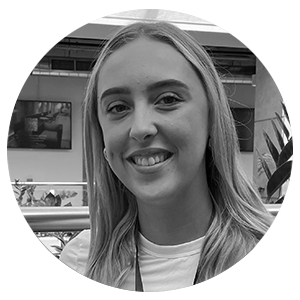Five Essential Tips for Writing a Standout Fundraising Cover Letter
Having read hundreds of fundraising cover letters over the years, I’ve noticed that most people either overcomplicate things or undersell themselves. The best cover letters aren’t the longest or flashiest, they’re the ones that tell a clear, personal story that connects the dots between who you are, what you’ve achieved, and why you want this job.
Here’s the structure I always recommend fundraisers follow:
1.Why the Charity or Not-for-Profit?
One of the great privileges of working in our sector is that we get to care about who we work for. So, start there. Why this organisation? What about its mission, values, or impact connects to you, personally or professionally? Maybe it’s an issue you’ve been touched by. Maybe it’s a cause you’ve long admired. Whatever it is, be specific. “I’ve always wanted to work for a health charity” doesn’t tell the reader anything meaningful. “After volunteering with a local hospice that supported my family, I’ve developed a deep respect for the role of end-of-life care charities”, that does. Authentic motivation is always more persuasive than polished phrasing.
2.Why the Role?
Next, focus on what it is about this fundraising role that excites you. Fundraising is broad, are you drawn to the creativity of corporate partnerships? The storytelling of individual giving? The strategic side of trusts and foundations? Explain which elements interest you most and, importantly, why they’ll keep you motivated. Fundraising is tough, so show that you understand what the role involves and that you’re energised by that challenge. For hiring managers, enthusiasm grounded in understanding is far more compelling than general ambition.
3.Fundraising Numbers Matter.
Numbers are your credibility. They prove you can deliver. But here’s the crucial part, you need to own your achievements, not just your team’s. “We raised £2 million” is fine, but it doesn’t tell me what you actually did. Did you secure £300,000 in new business? Grow an event’s income by 25%? Reignite a lapsed donor relationship worth five figures? Be proud of your contribution. You can absolutely reference the collective effort, but clarity around your personal impact is what separates strong fundraisers from good ones.
4.A Couple of Examples, Not the Whole Story.
This is your chance to bring your experience to life. Include one or two examples of projects or campaigns you’re proud of, the ones that show what you do best. Give a glimpse of how you work: your creativity, persistence, collaboration, or ability to spot opportunities. But don’t give away everything. A cover letter should open the door to conversation, not deliver the full presentation. Leave enough unsaid to create intrigue, make them want to meet you to hear more.
5.What’s Your USP?
Every fundraiser has a unique mix of skills, experiences, and motivations, that’s your USP (Unique Selling Proposition). What makes you stand out? Maybe you’ve built your career across different fundraising streams, bringing a broad perspective. Maybe you’ve come from outside the charity sector, giving you a fresh approach to donor relationships. Or perhaps you’re known for your calm leadership under pressure. Whatever it is, say it with confidence. Your USP is what helps a hiring manager remember you among dozens of applicants.
Bonus Advice: Use AI Wisely.
I don’t mind if someone uses AI to help shape a cover letter, but you must edit it to sound like you. AI can help structure your thoughts, but it can’t replicate your voice, personality, or authentic motivation for wanting a role. Hiring managers can spot when something reads “machine-polished” a mile away. Use the tool, but make sure your human story comes through.
If you follow this structure and write with sincerity, clarity, and purpose, your cover letter will immediately stand out in a pile. The goal isn’t perfection. It’s connection. Show why you care, prove you can deliver, and let your personality do the rest.
Ready to make your fundraising cover letter stand out? Get in touch with us for personalised guidance and support.
share article
take the next step











